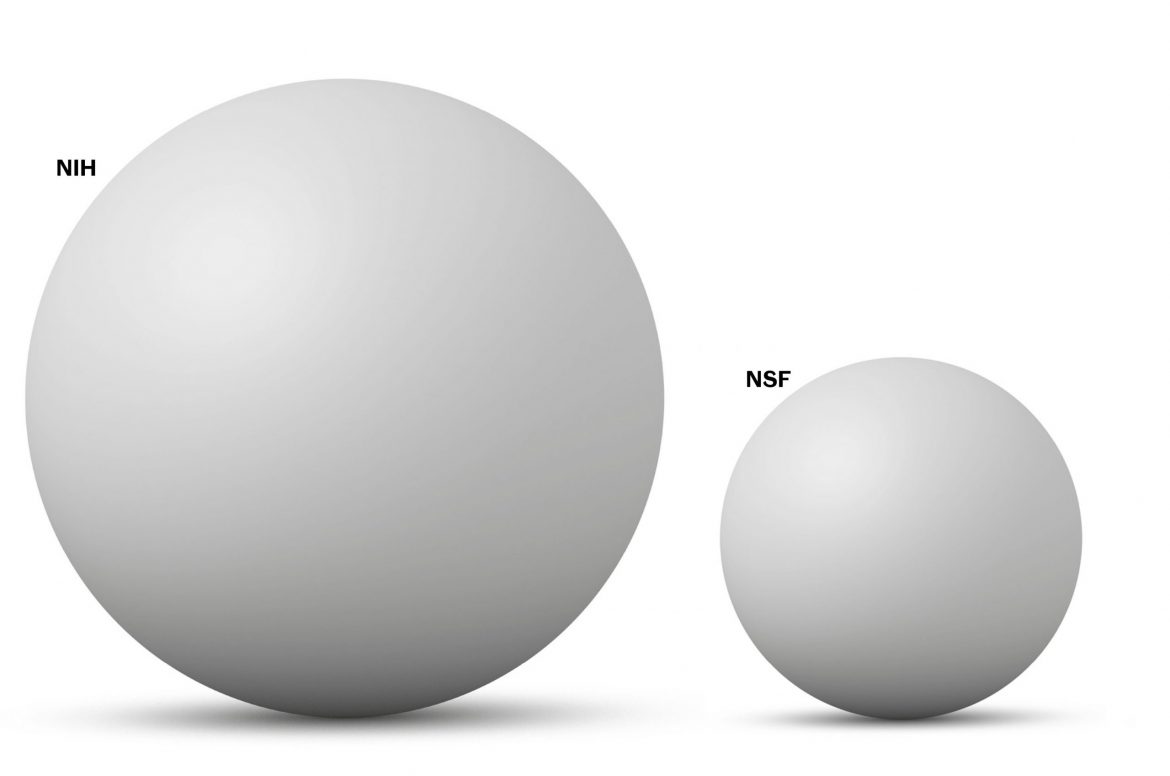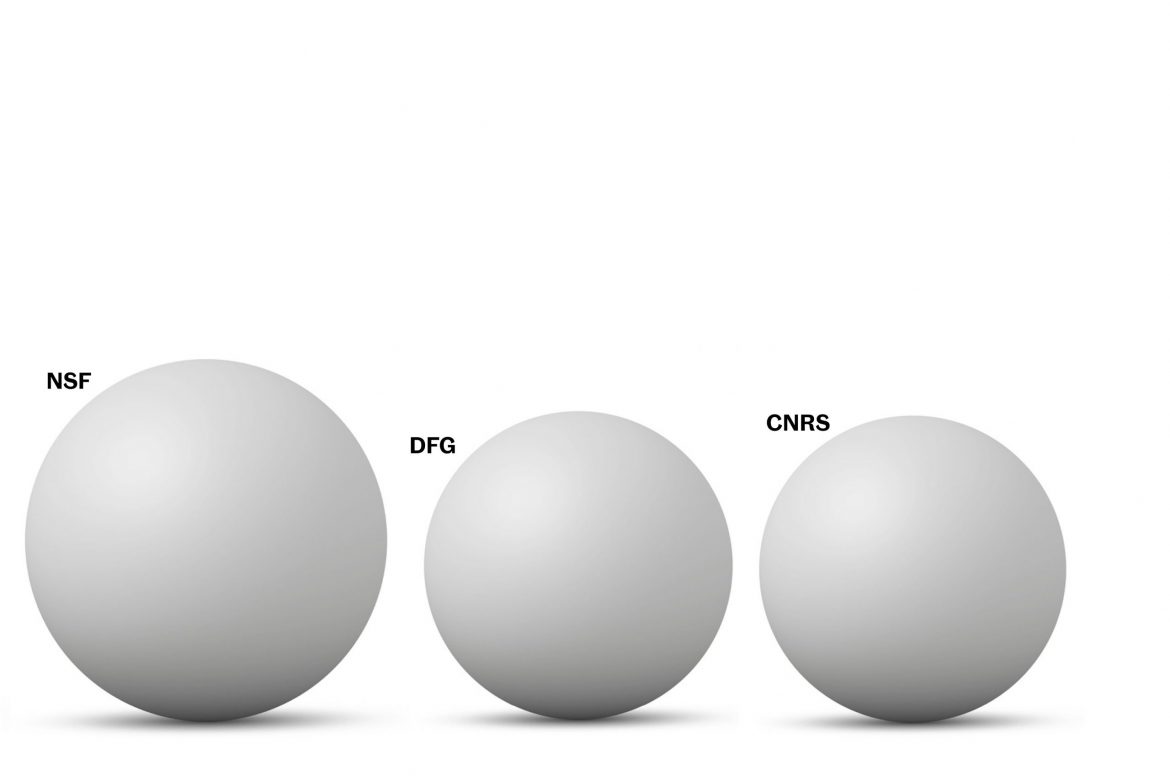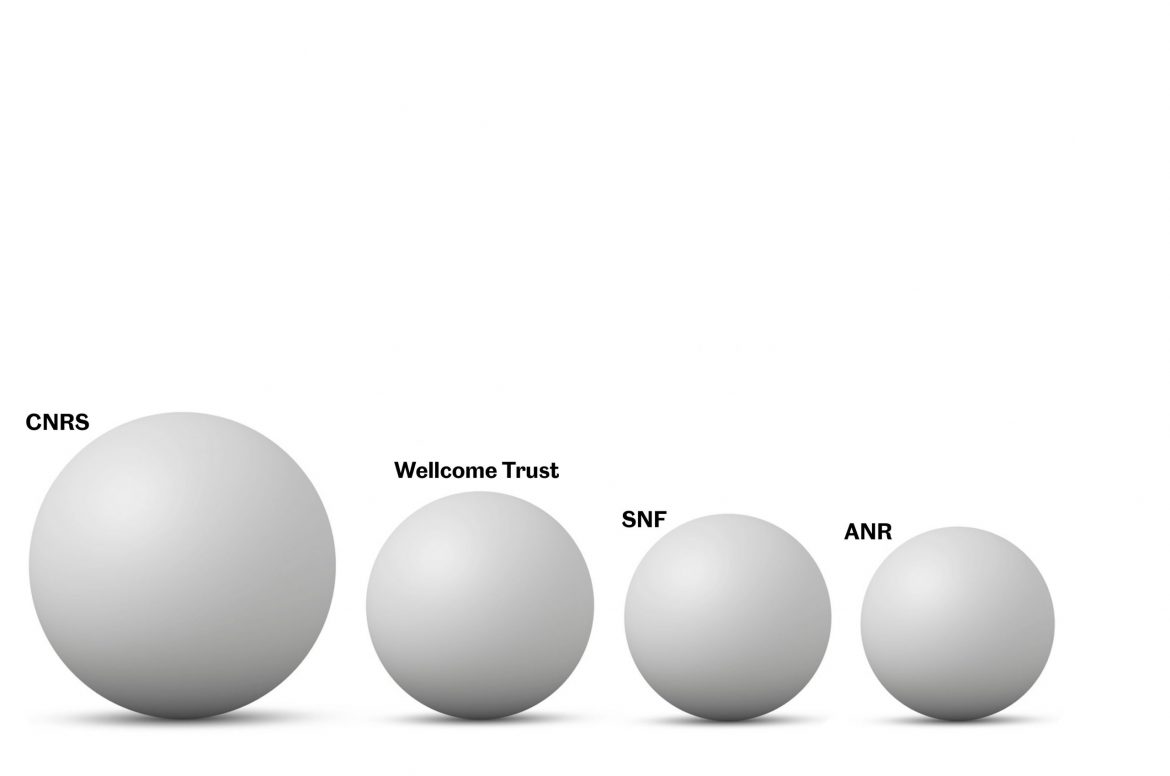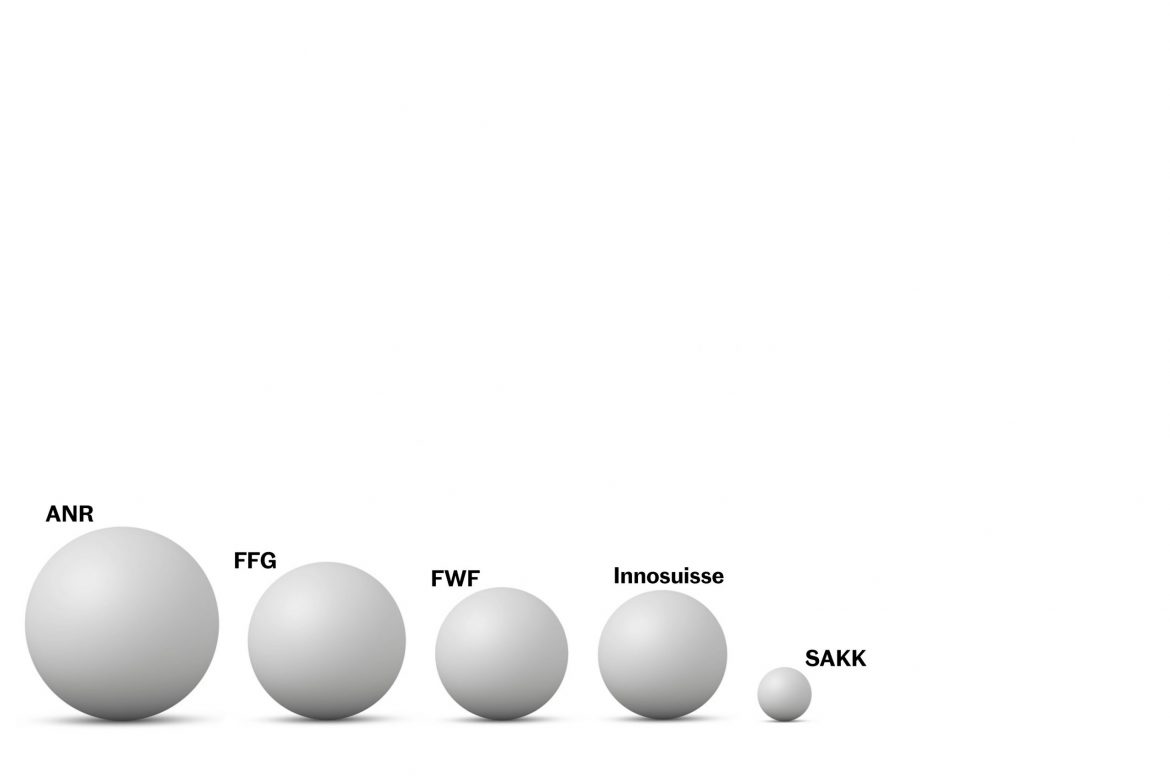RESEARCH FUNDING
The many forms of funding
Private foundations and public funding bodies want the same thing: to fund the best research. But the resources at their disposal and their decision-making processes can be vastly different.
If you suddenly came into a lot of money and wanted to invest it in research, you would be faced with a difficult task: Whom should you fund? To help you decide, we offer a list of the most important points you ought to clarify.
Do you want to employ researchers yourself?
That’s the norm at the Max Planck Society in Germany and the Centre national de la recherche scientifique in France, for example. This means they themselves become a kind of university with their own researchers – just without any teaching being done. Jürgen Janger is researching into innovation at the Austrian Institute of Economic Research, and he is rather sceptical about this: “A university lives from its connection to teaching, as this means it enjoys more diverse flows of knowledge”. He concedes that these ‘decentralised universities’ attract excellent minds, though they have usually carried out their ground-breaking research at universities beforehand.
Would you rather fund talented researchers, or good research projects?
Most large-scale funding institutions opt for a mix of both approaches. Promoting young talent is especially important to public funding bodies.
Do you want to stipulate the research topics you’re funding?
Many foundations do that. The umbrella organisation ‘Swissfoundations’ has over 100 members who together provide more than CHF 130 million a year to scholarship – though with a clear focus on specific topics. The Jacobs Foundation, for example, supports research projects on early childhood development. State funding bodies have to stay in line with political requirements, so they finance projects such as research into sustainable energy supplies. The Swiss National Science Foundation and the US National Institutes of Health are among the leading funding institutions for projects initiated by researchers.
How would you like to assess researchers’ applications?
The big public funding agencies in Austria, Germany and Switzerland do it through a kind of self-management. Researchers are elected to representative committees where they decide democratically which projects to support. By contrast, the US Defense Advanced Research Projects Agency (DARPA) appoints managers who are relatively autonomous in their decision-making.
Do you want to help pay for the salaries of your professors and their administrative costs?
This depends less on you, and more on the scientific ecosystem in which you’re working. “These are important factors for the dynamics in a country”, says Janger. In the USA, the entire package is paid for through grants. Institutes therefore tend to grow or shrink quickly, and there are a lot of young people involved in research. In the German-speaking countries, on the other hand, professors are mostly on permanent contracts. This makes longer-term research possible, but it also makes the careers of young researchers more precarious.
If you still haven’t figured out the best way to allocate your money, that’s perfectly normal. Evidence on this topic is still scarce, as is confirmed by a statement from the ‘Research on Research Institute’, an international consortium founded in 2019: “Billions of euros are spent on research every year, but we don’t know if this is allocated in the most effective or fair way”.

Research is carried out at the Campus of the National Institutes of Health (NIH) in Bethesda outside Washington D.C. This is the biggest research funding organisation in the world, but more than 80 percent of its funding goes to researchers at other institutions. | Photo: National Institutes of Health
Global influence
NIH – National Institutes of Health (US)
Budget: CHF 36 billion (2020)
Founded in: 1887 as the ‘Hygienic Laboratory’ of the national marine hospitals. It was subsequently affiliated to the US Department of Health, and its budget began rising considerably from 1938 onwards.
The US National Institutes of Health (NIH) is the largest research-funding organisation in the world. Its focus is exclusively on biomedicine. As its name suggests, the NIH is not just responsible for funding research: it also has its own research institutes, whose funding takes up some 10 percent of the NIH’s annual budget. Over 80 percent is spent on outside projects for which researchers submit funding applications.
The NIH thus exerts great influence on the research community – not just in the USA, but across the world. In 1982, for example, it promoted the establishment of a public database for the genetic sequences of all living creatures currently being studied. And in 2014, the NIH set things in motion to try and ensure that both female and male genders will in future be taken into account in animal experiments and cell studies.
The Wellcome Trust (GB)
Funding expenditure: CHF 1.5 billion (2020)
Founded in: 1936 in London, as a private foundation.
The Anglo-American pharmaceutical entrepreneur Henry Wellcome left a large fortune when he died. In accordance with his wishes, a foundation for health research was established with his bequest. Today, the Wellcome Trust has financial investments worth some CHF 32 billion, making it the fourth-largest foundation for research funding in the world, behind Novo Nordisk (Denmark), the Bill and Melinda Gates Foundation (USA) and the Stichting INGKA Foundation (The Netherlands). The Bill and Melinda Gates Foundation has to spend all its money within 20 years of the death of its donors, but the Wellcome Trust is here to stay.
Unlike public institutions, the Wellcome Trust can react quickly and decisively. For example, already by mid-February 2020 it was able to provide a sum of CHF 12 million for Covid-19 research. It also considers research culture to be a health matter at universities, and tries to improve the satisfaction level of researchers.
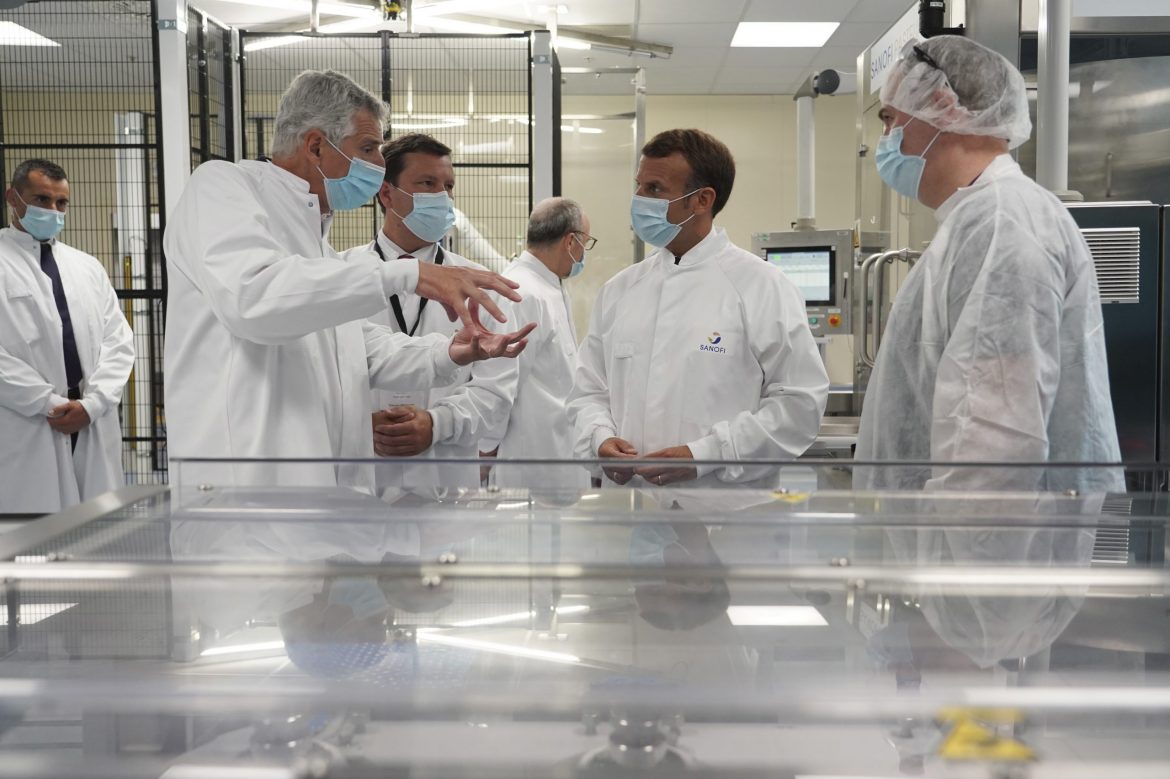
Every country has its own ecosystem for research funding. The French President Emmanuel Macron is here shown visiting the laboratory of a pharmaceutical company in 2020. | Photo: Laurent Cipriani/Pool/AP Photo/Keystone
Two very different state institutions
CNRS – Centre national de la recherche scientifique (FR)
Budget: CHF 3.7 billion (2020)
Founded in: 1939; attached to the Ministry of Higher Education and Research.
The CNRS is not actually a funding institution inasmuch as scientists work at the institution itself. The Centre consists of over 1,000 research institutes spread across France and around the world. Like the German Max Planck Institutes, it functions as a decentralised university, but without any teaching. In Switzerland, the closest comparison would be with the ETH Domain. In 2020, the CNRS had the second-highest number of scientific publications in the world after the Chinese Academy of Sciences.
The ‘classical’ research funding agency in France is really the Agence nationale de la recherche (ANR). Although the scientists of the CNRS have their own budget, they can also apply to the ANR for third-party funding (although its budget is a quarter of that of the CNRS). Nationally, however, the CNRS is more significant, given its influence on research culture and research priorities.
DFG – Deutsche Forschungsgemeinschaft (DE)
Budget: CHF 3.7 billion (2020)
Founded in: 1920 as the ‘Emergency Association of German Science’. Today, it is still constituted as an association.
The DFG describes itself as “the central, independent research funding organisation in Germany”. Its members are research institutions and scientific organisations that nominate their own representatives without any government influence. It roughly corresponds to the Swiss National Science Foundation, to the Agence nationale de la recherche in France (although this is, relatively speaking, much smaller) or to the Austrian Science Fund (FWF). All four institutions have a high degree of independence from government ministries that is otherwise rarely found anywhere in the world. Italy, for example, has no comparable funding organisation. Even in the UK and the USA, researchers are only present in an advisory capacity in those organisations that distribute taxpayers’ money for research purposes.
What is unusual about the DFG is that it receives its funding from both the federal and state governments. This serves to strengthen its independence from all of them. It is also striking that in its funding criteria, the DFG hardly ever insists on any economic or social benefit for research projects. This also sets it off from many similar funding organisations.
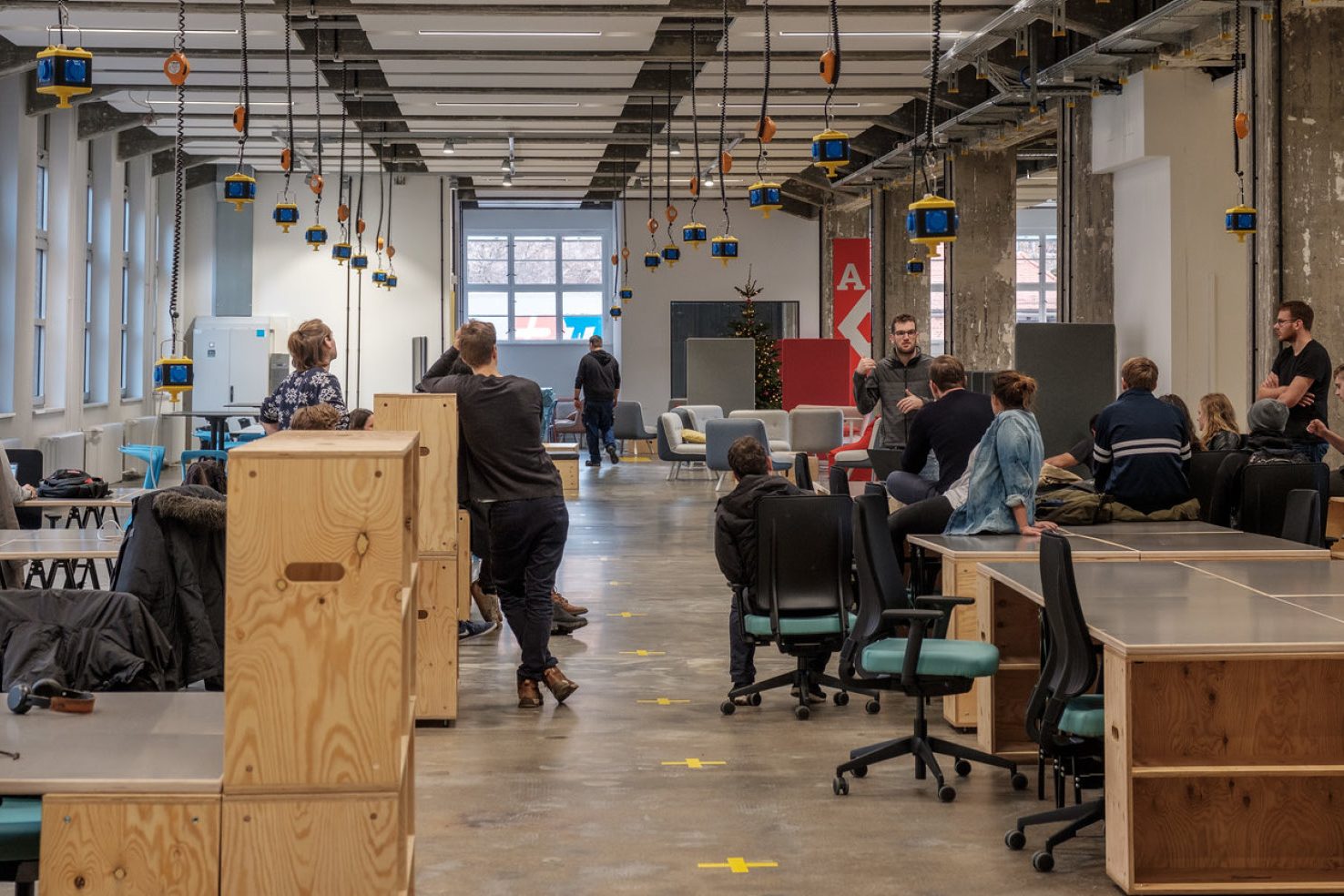
Politicians like it when research inspires the start-up scene. | Photo: Startup Incubator Berlin
In the private sector
FFG – the Austrian Research Promotion Agency (AT)
Funding expenditure: CHF 500 million (2020)
Founded in: 2004, from four predecessor organisations. It is a limited company that belongs to the Austrian state.
The focus of the FFG is clearly on business matters. Its website brims with confidence: “FFG is the Austrian ‘one-stop shop’ for industrial research and development”, it says. It specifically promotes technology, innovation and digitalisation – even to the extent of providing additional budgetary resources to support the provision of broadband Internet in remote regions of the country.
Unlike its Swiss counterpart Innosuisse, the FFG can provide direct support for companies – in fact, they get almost 70 percent of its funding. The FFG boasts about the number of jobs it has funded (10,000), the number of new products it has created (200), the start-ups it has financed, and the turnover generated per euro of funding (EUR 10). Its collaborations between business and science are mentioned only in passing. The research budget of the FFG is about twice that of the Austrian Science Fund (FWF).
Innosuisse – the Swiss Innovation Agency (CH)
Budget: CHF 270 million (2020)
Founded in: 1943, as a commission to promote scientific research; from 1996 to 2017 it was known as the Commission for Technology and Innovation. It is a public institute run by the federal government.
Like the FFG, Innosuisse wants to promote Switzerland as a business location. Unlike the FFG, however, Innosuisse emphasises the principle of subsidiarity: “It only supports innovative projects if they would not come to fruition without its funding, or if their market potential were otherwise to remain untapped”. Innosuisse aims to accelerate the transfer of knowledge from research to industry, so funding applications to it need to be signed off by both a university and a company.
Despite the significantly smaller budget of Innosuisse, expenditure on research and development in Austria and Switzerland is roughly the same – almost 3.2 percent of each country’s gross domestic product. In Switzerland, however, the private sector accounts for a larger share than in Austria (68 as opposed to 55 percent).

